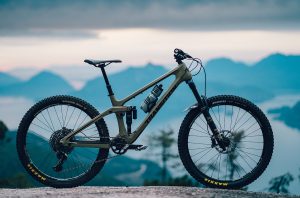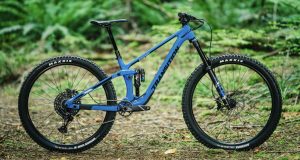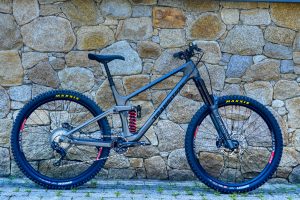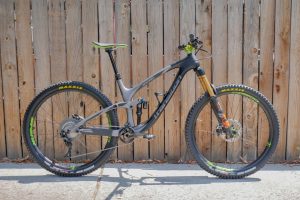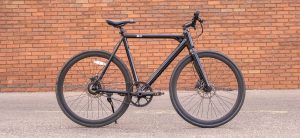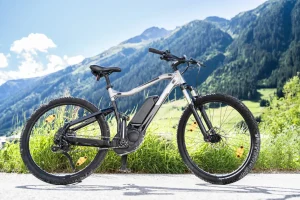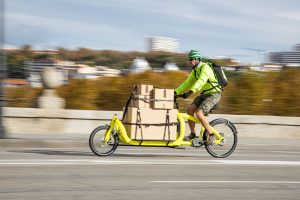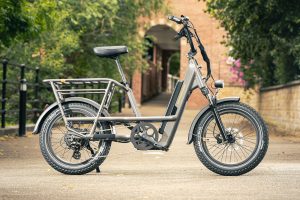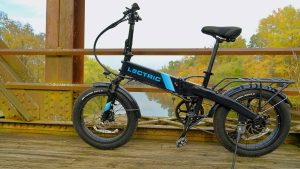Avoid Cycling Lower Back Pain, Cycling is a popular form of exercise and transportation that offers numerous health benefits. However, many cyclists often experience lower back pain, which can significantly impact their enjoyment and performance on the bike. In this article, we will explore the causes of cycling-related lower back pain and provide effective strategies to prevent and alleviate it.
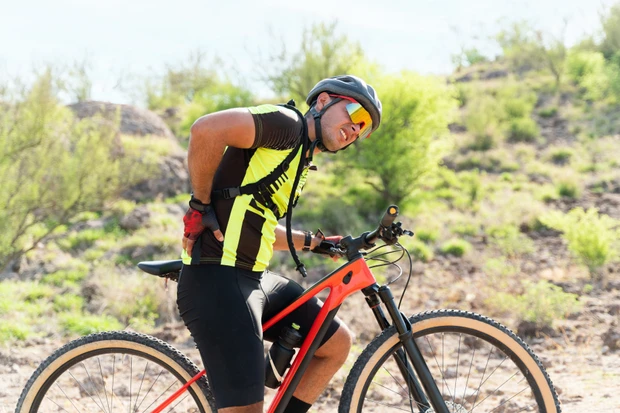
Understanding the Causes of Lower Back Pain in Cycling
Incorrect Bike Fit
One of the primary contributors to lower back pain in cycling is an incorrect bike fit. When your bike is not properly adjusted to your body proportions, it can result in excessive strain on your lower back. Common factors that affect bike fit include saddle height, handlebar reach, and frame size.
Poor Posture and Form
Maintaining proper posture and form while cycling is crucial for preventing lower back pain. Slouching or arching your back excessively can place unnecessary stress on the spine, leading to discomfort and pain. Additionally, gripping the handlebars too tightly and hunching your shoulders can exacerbate the issue.
Weak Core Muscles
A weak core can contribute to lower back pain during cycling. The core muscles, including the abdominals, obliques, and lower back muscles, provide stability and support to the spine. Insufficient core strength can result in an imbalance of forces, causing increased strain on the lower back.
Overuse and Repetitive Strain
Overdoing it on the bike without allowing sufficient recovery time can lead to overuse injuries, including lower back pain. The repetitive motion of pedaling can strain the muscles and ligaments in the lower back, especially if you don’t incorporate rest days into your cycling routine.
Road Conditions and Bike Vibrations
Riding on rough terrain or encountering constant vibrations from the road surface can contribute to lower back pain. The constant jolts and shocks can impact the spine and muscles, leading to discomfort and potential injury.
Importance of Proper Bike Fit
To prevent and alleviate lower back pain in cycling, it is crucial to ensure a proper bike fit. Here are some key aspects to consider:
Frame Size and Geometry
Choose a bike frame size and geometry that suits your body proportions. A frame that is too large or too small can lead to poor posture and increased strain on the lower back.
Saddle Height and Position
Set your saddle height at the appropriate level to ensure proper leg extension during pedaling. Additionally, adjusting the fore-aft position of the saddle can help optimize your riding posture and reduce lower back stress.
Handlebar Reach and Height
Adjust the handlebar reach and height to achieve a comfortable riding position. A handlebar that is too far or too close can cause excessive strain on the lower back and shoulders.
Correcting Your Posture and Form
Maintaining the right posture and form on the bike can significantly reduce the risk of lower back pain. Follow these guidelines:
Spine Alignment and Neutral Position
Keep your spine aligned in a neutral position, avoiding excessive rounding or arching. Engage your core muscles to support your spine and maintain stability.
Engaging Core Muscles
Strengthen your core muscles to provide better support for your lower back. Engage your abdominals and obliques while cycling to help stabilize your spine and distribute the load more evenly.
Maintaining Relaxed Shoulders and Arms
Avoid tensing your shoulders and gripping the handlebars too tightly. Keep your shoulders relaxed and your arms slightly bent, allowing for better shock absorption and reduced strain on your lower back.
Strengthening Your Core Muscles
Regular core strengthening exercises can help prevent lower back pain in cycling. Incorporate the following exercises into your fitness routine:

Planks and Bird Dogs
Planks and bird dogs are excellent exercises for strengthening your core. They target the abdominal muscles, lower back, and glutes, enhancing stability and reducing the risk of lower back pain.
Pelvic Tilts and Bridges
Pelvic tilts and bridges are effective for activating the muscles in your lower back and glutes. These exercises help improve spinal alignment and strengthen the posterior chain, promoting a healthier cycling posture.
Leg Raises and Russian Twists
Leg raises and Russian twists target the oblique muscles and hip flexors. By strengthening these muscles, you can enhance your overall core stability and prevent excessive strain on your lower back.
Avoiding Overuse and Repetitive Strain
To avoid overuse injuries and lower back pain, consider the following strategies:
Gradual Increase in Intensity and Duration
Gradually increase the intensity and duration of your cycling sessions. Avoid sudden jumps in mileage or intensity, as it can put excessive stress on your lower back and increase the risk of injury.
Cross-Training and Rest Days
Incorporate cross-training activities into your fitness routine to give your lower back and cycling muscles a break. Activities such as swimming, yoga, or strength training can help improve overall fitness and reduce the strain on your lower back.
Proper Warm-up and Cool-down
Always warm up before your cycling sessions and cool down afterward. Dynamic stretches and mobility exercises can help prepare your muscles for the activity and prevent tightness or stiffness that may contribute to lower back pain.
Minimizing the Impact of Road Conditions and Vibrations
To minimize the impact of road conditions and vibrations on your lower back, consider the following measures:
Choosing Smooth and Paved Routes
Opt for smooth and paved routes whenever possible. Avoid rough and uneven surfaces that can transmit excessive vibrations to your spine and lead to discomfort.
Suspension and Damping Systems
Consider using a bike with suspension or damping systems to absorb shocks and vibrations from the road. These features can significantly reduce the impact on your lower back and enhance your riding comfort.
Using Padded Gloves and Shorts
Invest in padded gloves and cycling shorts with built-in padding. These accessories provide extra cushioning and support, reducing the pressure on your hands, buttocks, and lower back.
FAQs
How long does it take to recover from cycling-related lower back pain?
Recovery time for cycling-related lower back pain varies depending on the severity of the condition and individual factors. Mild cases may resolve within a few days to weeks with proper rest, stretching, and strengthening exercises. However, chronic or severe cases may require more extended periods of recovery and medical intervention.
Can I continue cycling if I have lower back pain?
It is essential to listen to your body and consult with a healthcare professional if you experience lower back pain while cycling. In some cases, temporary modifications to your cycling routine, such as reducing intensity or mileage, may be necessary. However, continuing to cycle with persistent pain can exacerbate the issue and lead to further injury.
Are there any specific exercises to relieve lower back pain?
Exercises that focus on strengthening the core muscles and improving flexibility can help relieve lower back pain. Consult with a healthcare professional or a qualified trainer for personalized exercise recommendations based on your specific condition and needs.
Should I consult a healthcare professional for lower back pain?
If you experience persistent or severe lower back pain while cycling, it is advisable to consult a healthcare professional. They can assess your condition, provide an accurate diagnosis, and recommend appropriate treatment options or further investigations if needed.
Can stretching help prevent lower back pain in cycling?
Stretching exercises that target the muscles of the lower back, hips, and hamstrings can help improve flexibility and prevent lower back pain in cycling. Incorporate dynamic stretches before cycling and static stretches after cycling to maintain muscle balance and reduce the risk of tightness and discomfort.
Conclusion
Lower back pain is a common issue among cyclists, but it can be prevented and alleviated through proper bike fit, correct posture and form, core strengthening exercises, avoiding overuse, and minimizing the impact of road conditions. By implementing these strategies, you can enjoy pain-free cycling and maximize your performance on the bike.

